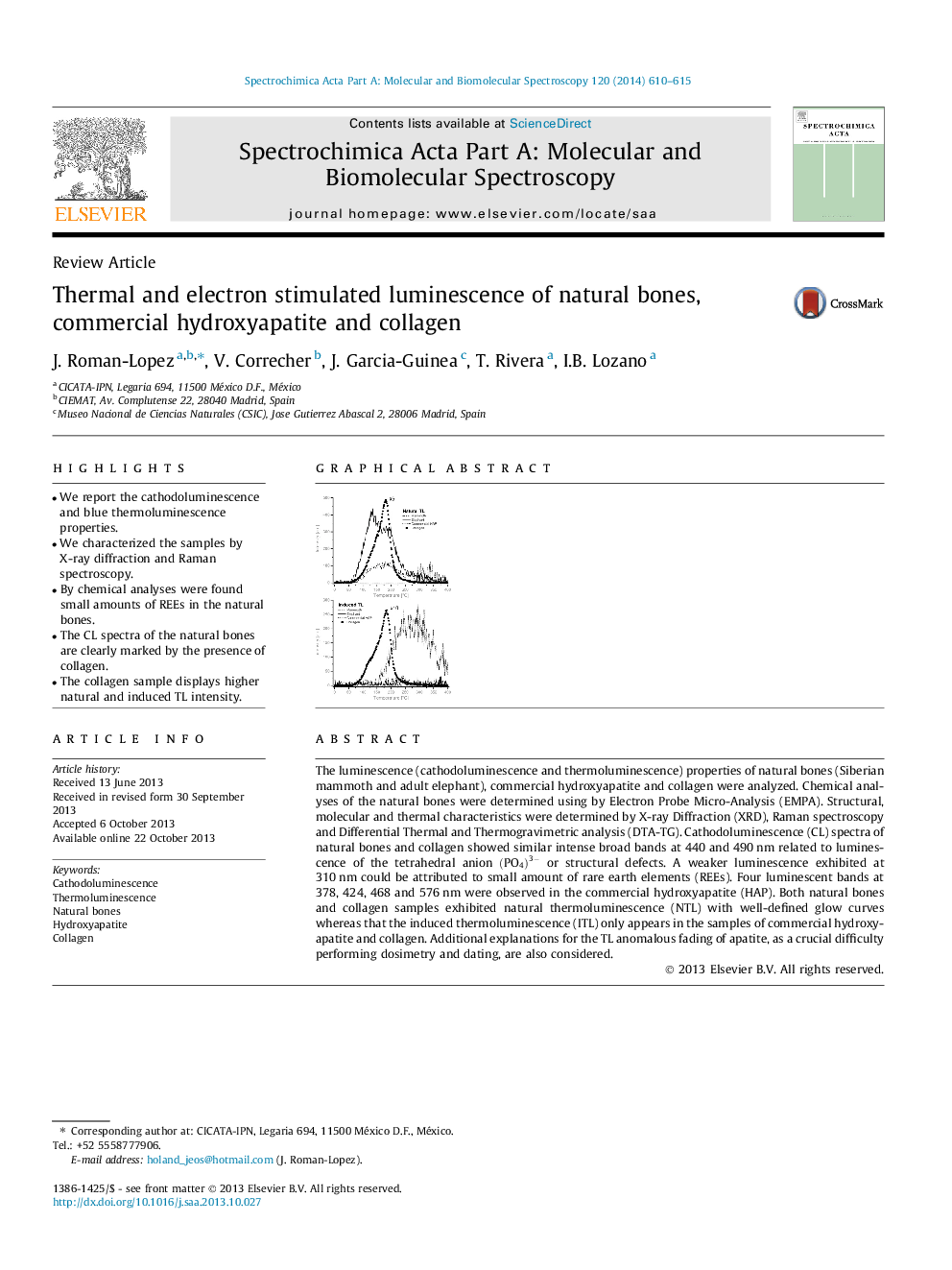| Article ID | Journal | Published Year | Pages | File Type |
|---|---|---|---|---|
| 1230893 | Spectrochimica Acta Part A: Molecular and Biomolecular Spectroscopy | 2014 | 6 Pages |
•We report the cathodoluminescence and blue thermoluminescence properties.•We characterized the samples by X-ray diffraction and Raman spectroscopy.•By chemical analyses were found small amounts of REEs in the natural bones.•The CL spectra of the natural bones are clearly marked by the presence of collagen.•The collagen sample displays higher natural and induced TL intensity.
The luminescence (cathodoluminescence and thermoluminescence) properties of natural bones (Siberian mammoth and adult elephant), commercial hydroxyapatite and collagen were analyzed. Chemical analyses of the natural bones were determined using by Electron Probe Micro-Analysis (EMPA). Structural, molecular and thermal characteristics were determined by X-ray Diffraction (XRD), Raman spectroscopy and Differential Thermal and Thermogravimetric analysis (DTA-TG). Cathodoluminescence (CL) spectra of natural bones and collagen showed similar intense broad bands at 440 and 490 nm related to luminescence of the tetrahedral anion (PO4)3-(PO4)3- or structural defects. A weaker luminescence exhibited at 310 nm could be attributed to small amount of rare earth elements (REEs). Four luminescent bands at 378, 424, 468 and 576 nm were observed in the commercial hydroxyapatite (HAP). Both natural bones and collagen samples exhibited natural thermoluminescence (NTL) with well-defined glow curves whereas that the induced thermoluminescence (ITL) only appears in the samples of commercial hydroxyapatite and collagen. Additional explanations for the TL anomalous fading of apatite, as a crucial difficulty performing dosimetry and dating, are also considered.
Graphical abstractFigure optionsDownload full-size imageDownload as PowerPoint slide
